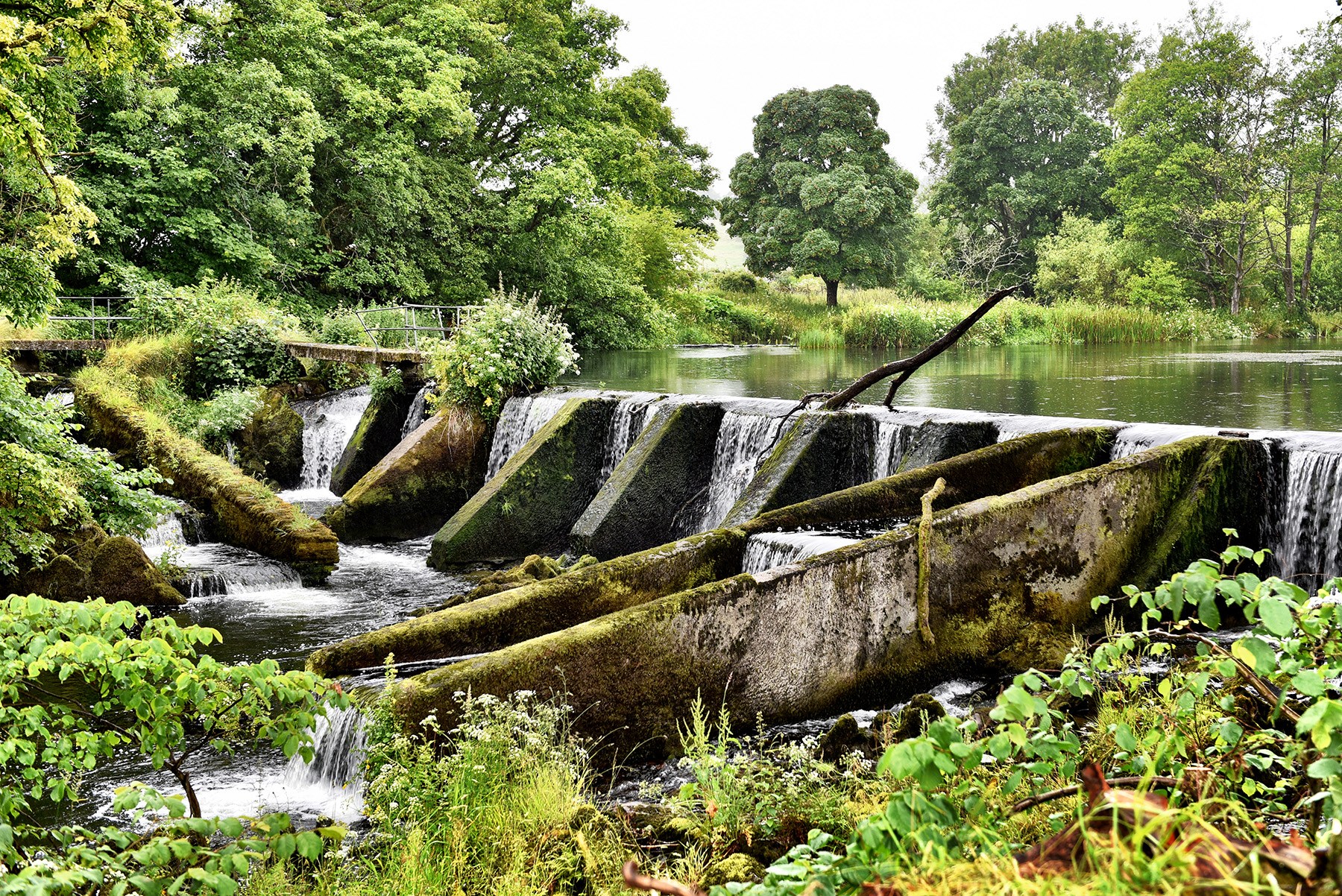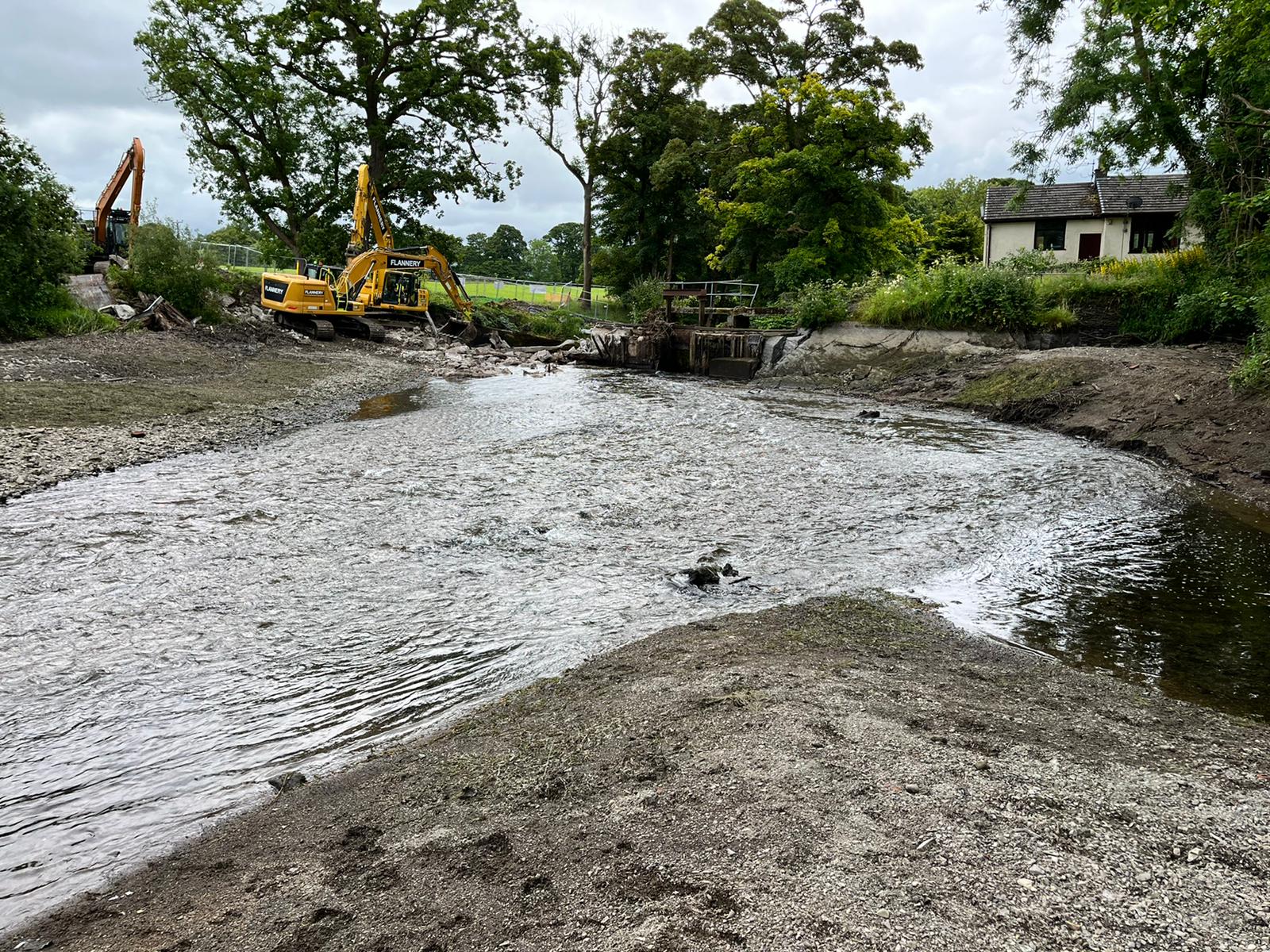After 150 years blocking the Kent River, the 3-metre-high Bowston Weir was finally demolished this past June. This was the largest river barrier removal in the UK this year.
The Bowston Weir removal integrates a large and ambitious restoration project called Cumbria River Restoration programme. This programme started as a partnership between the Environment Agency, Natural England and three Cumbria Rivers Trusts. The three main rivers in Cumbria (the Kent, Eden and Derwent) were mapped and experts identified potential opportunities where river restoration works could bring benefits both, people and wildlife. This removal was funded by European Agricultural Fund for Rural Development.

KEY POINTS which enabled this programme to make great progress, explained by Olly Southgate from the Environment Agency:
- “The team set about getting work done on the ground, which required the engagement of local landowners and other stakeholders. By delivering low risk demonstration projects we gained a great deal of experience and confidence, which has enabled us to increase the scale of our ambitions over the years. It also gave us some vital clues on how our rivers react to these interventions, after being choked and constrained in modified channels for decades.”
- “In 2015 Cumbria was devastated by the impacts of Storm Desmond, which resulted in extreme damage to both the environment and local communities on a huge scale. Something interesting was observed in the aftermath of this catastrophic event, the river restoration projects delivered prior to Storm Desmond stood up well and proved extremely resilient to the exceptional impacts of this major event. In fact, only weeks after Storm Desmond the watercourses where interventions had been delivered, soon returned to as they were prior to the event. The most important observation was the flood risk benefits that some of these projects have provided, by allowing the rivers to better connect to their natural flood plains, this helped to safely store much of the increased volumes of water. What was also apparent post the event is how quickly water re-entered the channel and also how quickly the surrounding land dried, allowing for normal farming practices to resume not long after. Subsequently this programme is not only providing significant benefits for the environment but on a larger scale has the potential to make a real difference to the flooding of communities downstream. As such every project now not only looks at the positive impacts of biodiversity and natural hydromorphology but also the potential flood risk benefits that could also be realised.”
The removal of Bowston Weir was significatively important within this river restoration programme, and the good news was picked up by The Guardian. DRE team member was able to meet in-person Jeremy Wade, who joined this special moment and made a short video to highlight the importance of this dam removal:
You can also watch the interview we made to Jeremy Wade on our #2 DRE Café during the start of the removal works!
If you wish to stay updated on this project, visit the South Cumbria Rivers Trust news page HERE.



